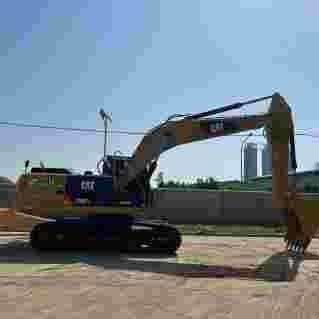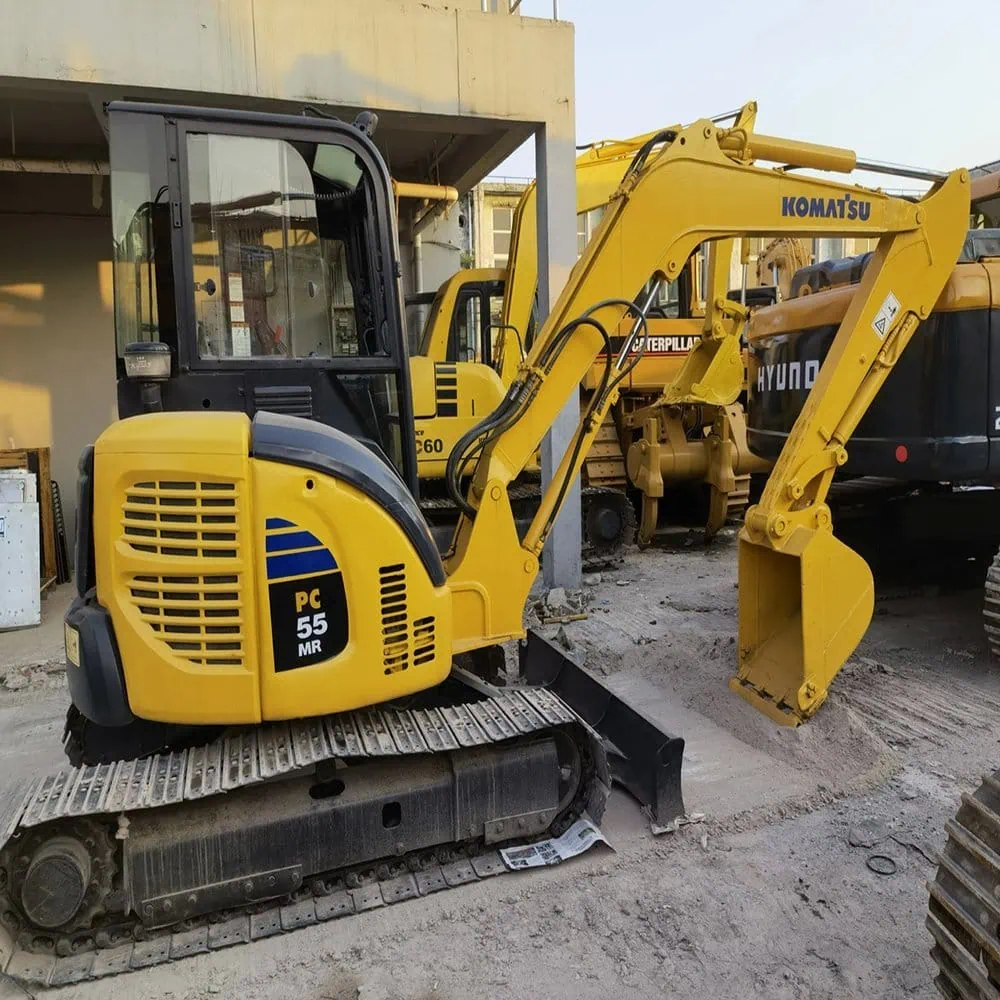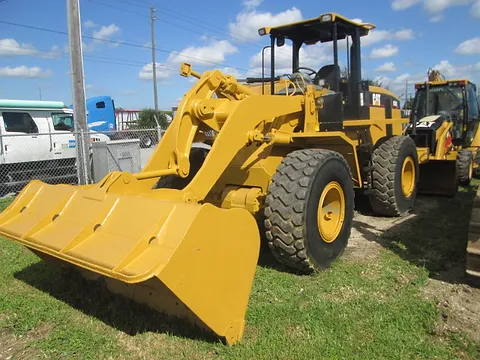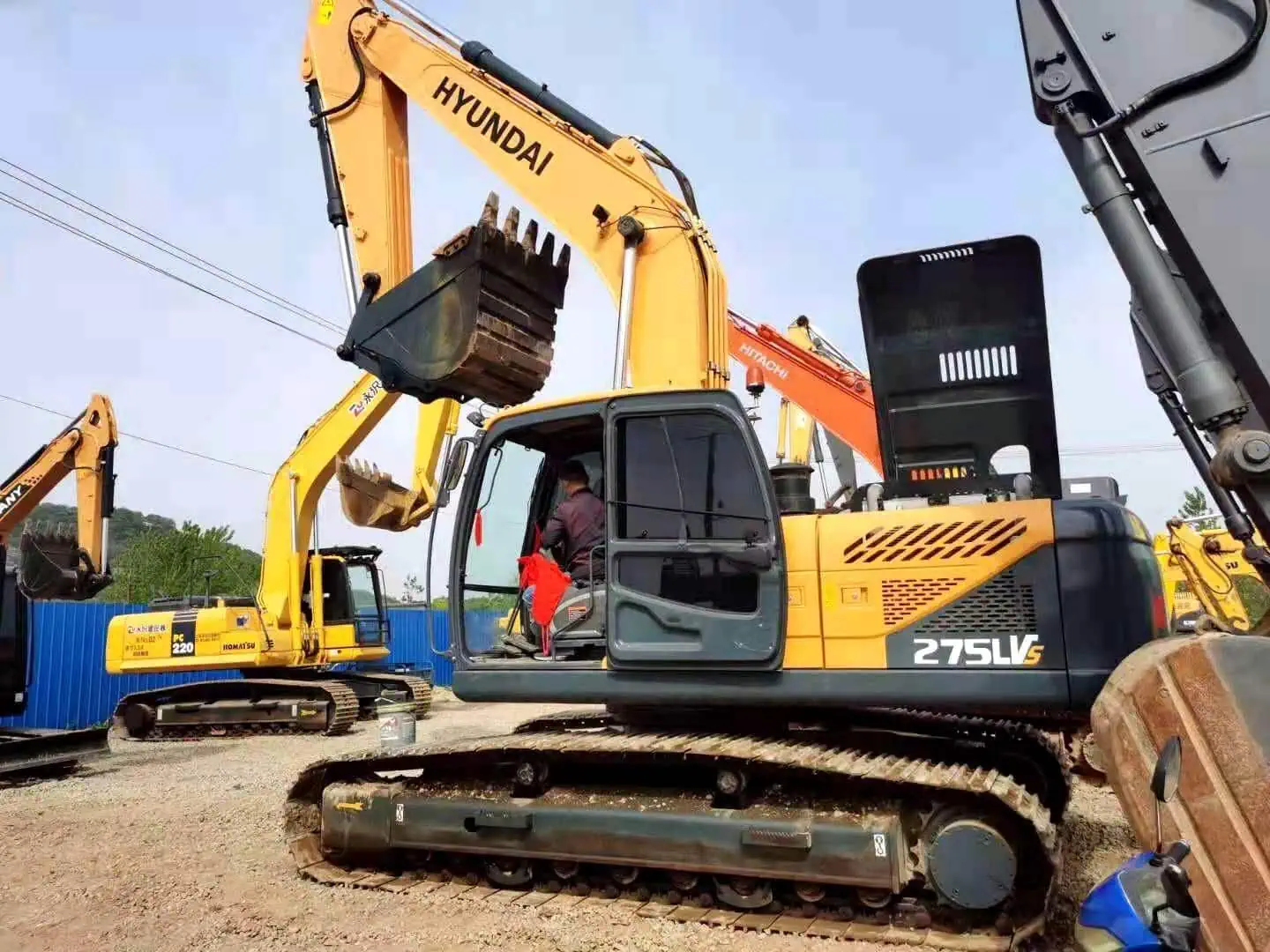Are you confused about choosing a tractor or skid steer loader? Here is a clear solution, you can read our infographics and articles to make an informed choice.
Tractors are better for heavy-duty and open-area tasks like plowing or towing. Skid steers excel in tight spaces, offering better visibility, agility, and handling in construction or landscaping jobs.
Let’s compare tractor vs skid steer key functions and help you choose what’s right for your needs.

جدول المحتويات
تبديلWhich Is Better: Tractor VS Skid Steer?
Tractors and skid steers each have advantages based on the type of undertaking. While tractors provide more power and versatility on open terrain, skid steers flourish on small, congested job sites.
Tractors are more powerful on uneven terrain, while skid steers are agile and maneuverable in small spaces.
| Feature | Tractor | Skid Steer |
|---|---|---|
| Terrain Handling | Great for rough, uneven ground | Best for flat, compact areas |
| Turning Radius | Wide | Zero-radius (very tight) |
| Attachment Flexibility | High (front + rear) | High (mostly front) |
| Speed & Visibility | Slower, less front visibility | Faster control, better front view |
| Learning Curve | Medium | Easy to learn |

What Are the Pros and Cons of Tractors?
Tractors have long been used in agricultural and large-scale land operations. They’re dependable, powerful, and extremely adaptable—but not without some drawbacks.
Tractors offer strength and multi-tasking abilities but can struggle with maneuverability in compact spaces.
| Pros | Cons |
|---|---|
| Strong pulling and lifting | Large turning radius |
| Supports multiple attachments | Less agile than skid steers |
| Ideal for uneven terrain | Slower in close-quarters operations |
| Long lifespan | Typically more expensive upfront |

What Are the Pros and Cons of Skid Steers?
Skid steers are small but powerful machines that can handle a wide range of urban and commercial duties. However, their design has a few limitations.
Skid steers are compact and versatile but may not perform as well on soft or wet terrain.
| Pros | Cons |
|---|---|
| Tight turning radius | Less stable on muddy or steep slopes |
| Easy attachment switching | Tires wear quickly with heavy use |
| Quick to learn and operate | Lower ground clearance than tractors |
| Great visibility in front | Rear visibility can be limited |

Which Machine Is Better for Farming Tasks?
Tractors are typically the more practical option when it comes to agricultural operations. They are equipped to handle soil preparation, planting, harvesting, and trailer towing. Tractors can handle a wide range of farm implements, including plows and seeders, thanks to features such as greater ground clearance, wider tires, and powerful rear PTO systems.
Tractors are typically the more practical option when it comes to agricultural operations. They are equipped to handle soil preparation, planting, harvesting, and trailer towing. Tractors can handle a wide range of farm implements, including plows and seeders, thanks to features such as greater ground clearance, wider tires, and powerful rear PTO systems.
While skid steers can perform light farming jobs such as moving feed, cleaning barns, or hauling manure, they lack the pulling capacity and soil penetration that tractors provide. For serious fieldwork, tractors remain indispensable.

Which Works Better for Construction Jobs?
In construction, efficiency, visibility, and maneuverability are critical. Skid steers perform here due to their compact size and ability to turn in confined places. They can readily transport products, level land, and even undertake demolition operations with the correct attachments. Their quick, sensitive controls are suited for fast-paced construction operations.
Skid steers are typically more efficient for construction due to their mobility, turning radius, and quick attachment switching.
Tractors, while powerful, are better suited for activities like dragging trailers or grading wide-open areas. On modern job sites where space is restricted and speed is important, skid steers are frequently the go-to machine.
How Do the Costs of Ownership Compare?
The initial purchase cost is only one aspect of the financial equation. Skid steers, particularly smaller types, are typically less expensive to purchase upfront. However, they may necessitate more frequent tire replacements, particularly when used on abrasive surfaces. Their small size also results in increased wear and tear when overloaded.
Skid steers are less expensive to purchase but may require more care, whereas tractors last longer with fewer repairs.
Tractors, on the other hand, often have a longer life and a better resale value. Their engines and components are designed to last, making them an excellent long-term investment, particularly for agricultural applications.
Are Skid Steers Easier to Operate Than Tractors?
Many first-time equipment buyers like skid steers because of their simple controls. Most models use joystick steering and foot pedals, making the learning curve much shorter than with traditional tractors, which frequently require clutch systems and various gear ranges.
Yes, skid steers are easier to use, particularly for beginners or those operating in limited spaces.
They also have good forward visibility and rapid response, making them suitable for repetitive loading or material handling jobs. Tractors may be more difficult to operate, but once learned, they provide greater flexibility.

Are Skid Steers Good for Farming?
Skid steers are surprisingly useful on farms, especially for livestock operations. Their size and flexibility allow them to clean out tight barns, transport bales of hay, and even feed livestock with the proper attachments. But they do have limits.
Skid steers are great for indoor or light-duty farm work but can’t replace tractors for heavy field tasks.
They can’t pull plows or work well in muddy or deeply rutted fields. For smaller-scale farms or support roles, they’re excellent, but not a full substitute.
Do You Need a License to Operate a Skid Steer?
Licensing requirements vary depending on your area and workplace. In the United States, OSHA does not need a formal license, but businesses must offer adequate training for construction workers. Certain rental firms or insurance plans may additionally require proof of competency.
Some countries or job sites require training or certification to operate a skid steer properly.
Even if a license is not required, comprehensive training reduces safety hazards while increasing efficiency. It is highly advised that commercial users take an OSHA skid steer course.

Can One Machine Replace the Other?
This is one of the most frequently asked questions. While skid steers and tractors may overlap in certain tasks, they’re designed with different goals in mind. A tractor is meant to pull, plow, and support agricultural attachments, while a skid steer is optimized for movement, lifting, and quick transitions in tight job sites.
Tractors and skid steers are complementary tools, not replacements. Each is built to perform distinct tasks efficiently.
Some users do own both to cover all bases—tractor for field power, and skid steer for yard or construction handling.
ملخص
Choosing the right machine depends on your job. Tractors bring strength; skid steers offer agility. Let me know your project needs—I’m happy to help!










